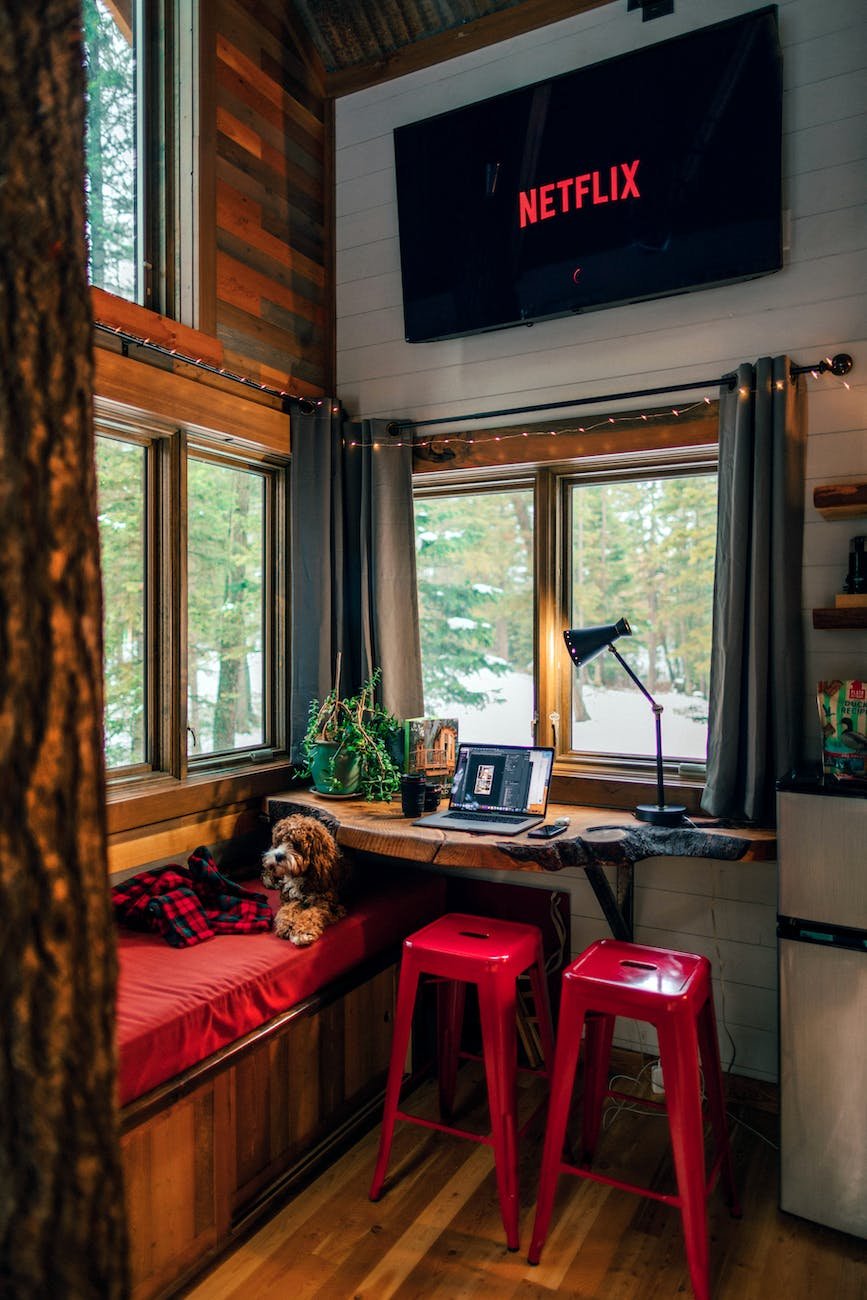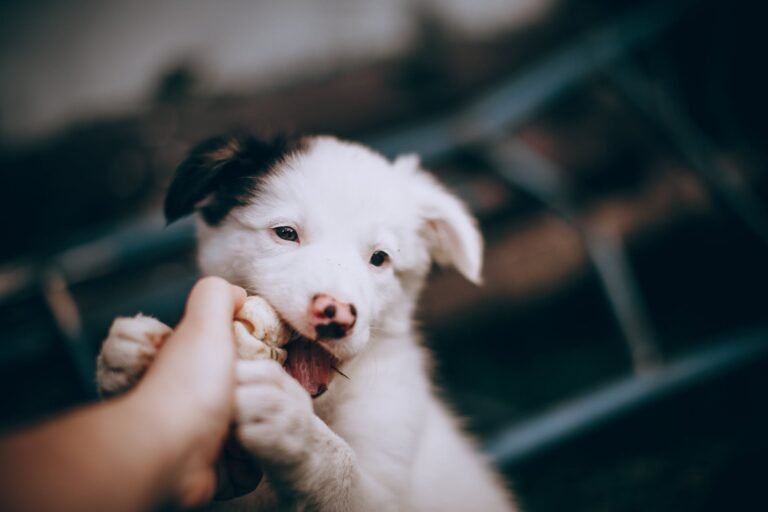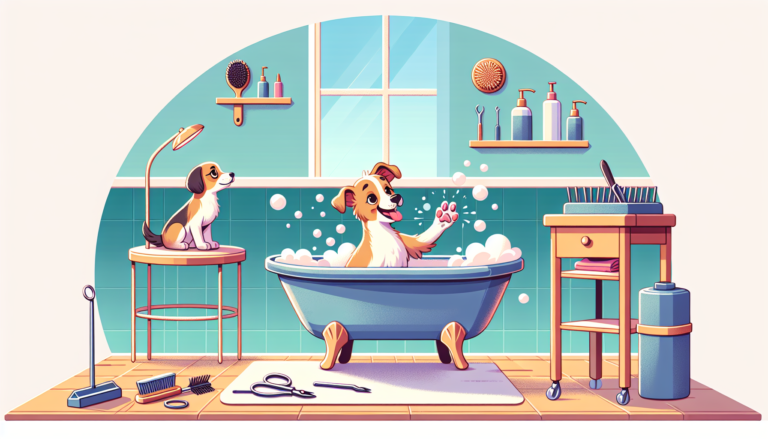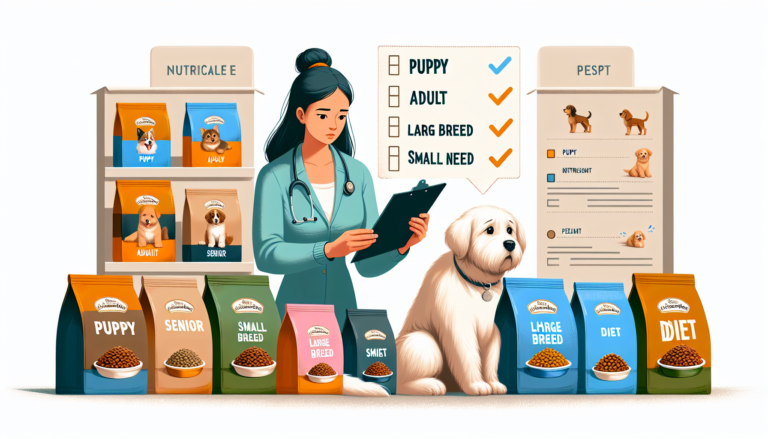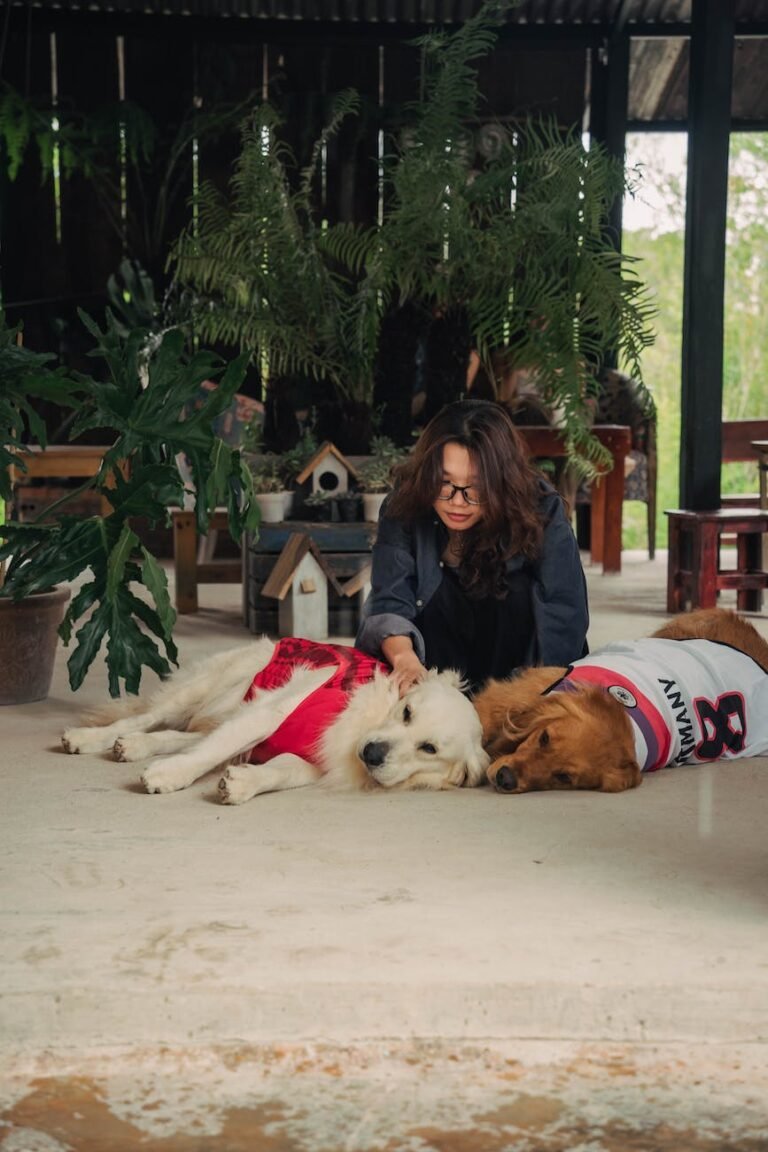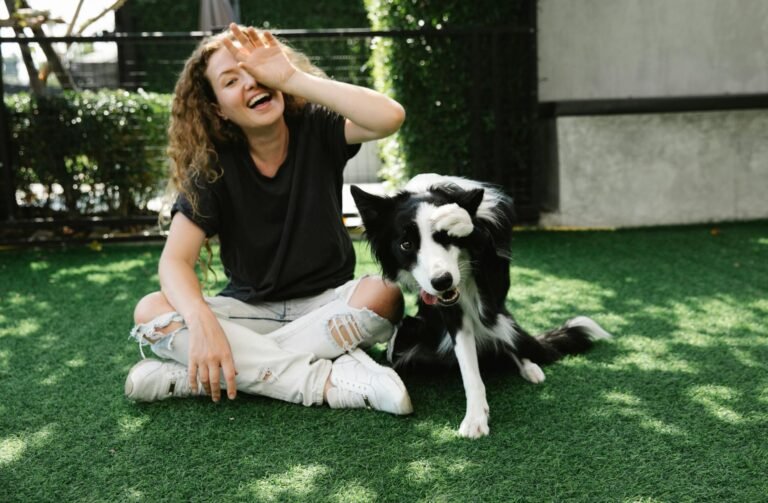Puppy Parenthood 101: Essential Tips for Bringing Home a New Pup
Preparing for Your New Puppy
Bringing home a new puppy is an exciting time filled with joy and anticipation. To ensure a smooth transition for both you and your furry friend, it’s essential to make the necessary preparations. This section will guide you through the key steps of puppy-proofing your home, gathering essential supplies, and setting up a safe and comfortable space for your new pup.
Puppy-Proofing Your Home
Before your new puppy arrives, it’s crucial to create a safe environment that minimizes potential hazards. Take the time to puppy-proof your home by following these tips:
- Remove any toxic plants, chemicals, or household cleaners from areas accessible to your puppy.
- Secure loose cords and wires to prevent chewing and potential electrical hazards.
- Store valuable or fragile items out of reach to avoid accidents.
- Block off areas that may be dangerous or off-limits to your puppy, such as staircases or rooms with hazardous materials.
- Keep small objects, including children’s toys and choking hazards, out of your puppy’s reach.
For a comprehensive guide on puppy-proofing your home, check out our article on puppy-proofing your home.
Essential Supplies for Your New Pup
To ensure your new puppy’s comfort and well-being, it’s essential to gather the necessary supplies beforehand. Here are some essential items you’ll need:
| Supplies |
|---|
| Bedding – Provide a comfortable bed or crate pad for your puppy to rest and sleep. |
| Food and Water Bowls – Choose bowls that are appropriate for your puppy’s size, ensuring they are sturdy and easy to clean. |
| Food – Select a high-quality puppy food that meets your puppy’s nutritional needs. Consult our puppy feeding guide for more information. |
| Collar and Leash – Invest in a well-fitting collar or harness and a leash suitable for your puppy’s size and breed. |
| Identification Tags – Attach identification tags with your contact information to your puppy’s collar to ensure their safe return if they ever get lost. |
| Toys – Provide a variety of interactive and chew toys to keep your puppy entertained and help with teething. |
| Grooming Supplies – Gather items such as a brush or comb, puppy-specific shampoo, nail trimmers, and ear cleaning solution for regular grooming sessions. |
| Training Supplies – Have treats, clickers, and training aids on hand to begin teaching your puppy basic commands. |
| Crate or Playpen – Consider crate training your puppy for their safety and to aid in house training. Learn more about crate training in our article on crate training a puppy. |
Setting Up a Safe and Comfortable Space
Creating a designated area for your new puppy helps them feel secure and establishes boundaries. Here are some tips for setting up a safe and comfortable space:
- Designate a specific room or area in your home for your puppy. This space should be quiet and away from household traffic.
- Use a crate or playpen to provide a secure and cozy spot for your puppy to rest and sleep. Make sure it is large enough for your puppy to stand, turn around, and lie down comfortably.
- Line the crate or playpen with soft bedding for added comfort.
- Place puppy pads or newspapers in a specific area for your puppy’s bathroom needs, gradually transitioning to outdoor potty training. Learn more about house training basics in our article on puppy training tips.
- Provide access to fresh water and place food bowls in a separate area to prevent messes and establish a feeding routine.
By puppy-proofing your home, gathering the necessary supplies, and setting up a safe and comfortable space, you’re taking important steps to ensure a smooth transition for your new pup. As you welcome your furry friend into your home, remember to shower them with love, patience, and positive reinforcement to help them adjust to their new surroundings.
Bringing Your Puppy Home
Bringing home a new puppy is an exciting and joyous time for both you and your furry friend. However, it’s important to ensure a smooth transition and establish a routine right from the start. In this section, we will discuss how to introduce your puppy to their new home, establish a routine, and provide tips for the first night.
Introducing Your Puppy to Their New Home
When you bring your puppy home, it’s essential to create a calm and welcoming environment. Start by designating a safe and comfortable space for your puppy. This can be a crate, a puppy-proofed room, or an area enclosed with baby gates. For detailed tips on puppy-proofing your home, refer to our article on puppy-proofing your home.
Allow your puppy to explore their new surroundings gradually. Supervise their exploration to prevent any accidents or unwanted chewing. Introduce them to different areas of the house one at a time, ensuring they are comfortable and familiar with each space. Remember to provide plenty of positive reinforcement and rewards to encourage good behavior.
Establishing a Routine
Establishing a routine is crucial for your puppy’s well-being and development. Dogs thrive on consistency, so it’s important to provide a structured daily schedule. This includes regular feeding times, potty breaks, exercise, playtime, and training sessions.
Create a feeding schedule based on your puppy’s age and breed. Refer to our puppy feeding guide for more information on appropriate portions and frequencies. Consistency in feeding times will help regulate your puppy’s digestive system and aid in house training.
Additionally, establish a consistent potty routine. Take your puppy outside to their designated potty area frequently, especially after meals, naps, playtime, and waking up. Praise and reward them when they eliminate in the appropriate spot. For more detailed information on crate training and house training, visit our article on crate training a puppy.
The First Night: Tips for a Smooth Transition
The first night can be challenging for both you and your puppy as they adjust to their new surroundings. To ensure a smooth transition, create a comfortable sleeping area for your puppy. Consider using a crate or a cozy bed in a quiet corner of your home. Place familiar blankets or a piece of clothing with your scent to provide a sense of security and familiarity.
Keep in mind that your puppy may experience some separation anxiety during the first few nights. To ease their anxiety, establish a bedtime routine. This can include a calming walk, playtime, and a short potty break before settling them down for the night. Avoid giving in to any nighttime whining or barking, as this may reinforce the behavior. Instead, provide reassurance through your presence and offer a comforting toy or blanket.
By introducing your puppy to their new home, establishing a routine, and providing a smooth transition during the first night, you are setting the foundation for a happy and well-adjusted puppy. Remember to be patient, consistent, and loving as you embark on this journey of puppy parenthood. For more tips on puppy training and behavior, check out our article on puppy training tips.
Basic Puppy Care
When bringing home a new puppy, it’s important to provide them with the care and attention they need. This section covers some essential aspects of basic puppy care, including feeding, house training, and socializing.
Feeding Your Puppy
Proper nutrition is crucial for your puppy’s growth and development. It’s recommended to feed your puppy a balanced diet specifically formulated for their nutritional needs. Consult with your veterinarian to determine the appropriate type of food and feeding schedule for your puppy based on their breed, age, and size.
| Age | Number of Meals per Day |
|---|---|
| 8-12 Weeks | 4 |
| 3-6 Months | 3 |
| 6-12 Months | 2 |
Ensure that fresh water is always available for your puppy. Avoid feeding them human food, as it can be harmful to their health. For more detailed information on puppy feeding, refer to our article on puppy feeding guide.
House Training Basics
House training is an important aspect of puppy care to ensure they understand where to eliminate. Establish a consistent routine for taking your puppy outside to designated areas for bathroom breaks. Praise and reward them when they successfully eliminate outdoors, reinforcing positive behavior.
To prevent accidents indoors, keep a close eye on your puppy, especially after meals, naps, or playtime. Signs that your puppy may need to eliminate include sniffing around, circling, or whining. If accidents occur, avoid punishment and clean up the mess promptly using pet-friendly cleaning products.
Consider crate training as a helpful tool for house training and providing a safe space for your puppy. For more information on crate training, refer to our article on crate training a puppy.
Socializing Your Puppy
Socialization plays a vital role in shaping your puppy’s behavior and ensuring they grow up to be well-adjusted dogs. Introduce your puppy to various people, animals, and environments from an early age. This exposure helps them become comfortable and confident in different situations.
Arrange supervised playdates with other vaccinated and friendly dogs to encourage positive interactions. Expose your puppy to different sounds, sights, and experiences to help them develop resilience and reduce the likelihood of fear or anxiety later in life.
Remember to prioritize your puppy’s safety during socialization. Avoid overwhelming them with too many new experiences at once. Gradually increase the level of exposure as they become more comfortable. For additional tips on puppy training and socialization, consult our article on puppy training tips.
By focusing on the basics of puppy care—feeding, house training, and socializing—you can lay a solid foundation for your new furry family member. Establishing good habits from the start will contribute to a happy and healthy relationship with your puppy. Don’t forget to puppy-proof your home to create a safe environment for your new companion. Check out our article on puppy-proofing your home for more information.
Health and Wellness
Taking care of your new puppy’s health and well-being is essential to ensure a happy and thriving furry family member. In this section, we will discuss important aspects of health and wellness, including finding a veterinarian, vaccinations and preventive care, and grooming and hygiene.
Finding a Veterinarian
One of the first steps in providing optimal care for your puppy is finding a reputable veterinarian. A veterinarian will play a crucial role in your puppy’s overall health, providing routine check-ups, vaccinations, and medical care when necessary. Here are some tips to help you find the right veterinarian for your new pup:
- Ask for recommendations from friends, family, or other pet owners in your community.
- Research local veterinarians online and read reviews to gauge their reputation and quality of care.
- Consider their location, office hours, and emergency services availability to ensure convenient access to care.
- Schedule a visit to meet the veterinarian and their staff, asking questions about their experience, approach to pet care, and services offered.
Remember to establish a good relationship with your veterinarian as they will become an important resource for your puppy’s health and well-being.
Vaccinations and Preventive Care
Vaccinations are crucial for protecting your puppy against common diseases and ensuring their long-term health. Your veterinarian will provide a vaccination schedule tailored to your puppy’s specific needs. Vaccinations typically cover diseases such as rabies, distemper, parvovirus, and hepatitis. It’s important to stay up-to-date with your puppy’s vaccinations to provide them with the best protection.
In addition to vaccinations, preventive care is essential for maintaining your puppy’s health. This includes regular deworming treatments to prevent intestinal parasites and flea and tick prevention to protect against external parasites. Your veterinarian will guide you on the appropriate preventive care measures for your puppy based on their age, breed, and lifestyle.
Grooming and Hygiene
Grooming plays a vital role in keeping your puppy clean, comfortable, and looking their best. Regular grooming sessions not only maintain their appearance but also help you detect any skin issues or abnormalities early on. Here are a few grooming and hygiene practices to consider:
- Brush your puppy’s coat regularly to prevent matting and tangles, especially for long-haired breeds.
- Trim their nails regularly to avoid overgrowth and discomfort.
- Clean their ears gently to prevent infections, especially for breeds with floppy ears.
- Brush their teeth regularly to maintain good dental hygiene and prevent dental diseases.
Remember to use appropriate grooming products specifically formulated for puppies and seek professional grooming assistance when needed.
By focusing on the health and wellness of your new puppy, you are setting them up for a happy and vibrant life. Finding a veterinarian you trust, staying up-to-date with vaccinations and preventive care, and practicing proper grooming and hygiene are essential steps in ensuring your puppy’s well-being. For more tips on puppy care and training, check out our articles on crate training a puppy and puppy training tips.
Training and Behavior
Bringing home a new puppy is an exciting time, but it’s important to establish a foundation of training and positive behavior from the start. In this section, we will cover the basics of training your new pup, including essential commands, positive reinforcement techniques, and how to address common behavior issues.
Basic Training Commands
Teaching your puppy basic commands is an essential part of their training. These commands create a line of communication between you and your furry friend, helping them understand what is expected of them. Here are a few basic commands to start with:
| Command | Description |
|---|---|
| Sit | Teaching your puppy to sit is a fundamental command that helps them learn self-control and patience. Begin by holding a treat close to their nose and slowly move it upwards, causing them to naturally sit. Reward them with the treat and praise when they comply. |
| Stay | The “stay” command is useful for keeping your puppy in one place temporarily. Start by commanding your puppy to sit, then hold your hand up in front of them and say “stay” while taking a step back. Gradually increase the distance and duration as they become more comfortable with the command. |
| Come | Teaching your puppy to come to you when called is crucial for their safety. Begin in a controlled environment and call your puppy’s name followed by the command “come.” When they come to you, reward them with treats and praise. |
| Down | The “down” command is useful for getting your puppy to lie down. Start with your puppy in a sitting position, then hold a treat near their nose and slowly lower it towards the ground. As they follow the treat, say “down” and reward them once they are lying down. |
Consistency and positive reinforcement are key when training your puppy. Be patient and use treats, praise, and positive reinforcement techniques to encourage good behavior.
Positive Reinforcement Techniques
Positive reinforcement is an effective and humane training method that rewards desired behaviors, encouraging your puppy to repeat them. This approach focuses on rewarding good behavior rather than punishing unwanted behavior. Here are some positive reinforcement techniques to utilize:
- Treats: Use small, tasty treats to reward your puppy for following commands or exhibiting desired behaviors. Treats should be given immediately after the behavior to establish a clear connection between the action and the reward.
- Verbal praise: Along with treats, offer verbal praise in an enthusiastic and cheerful tone. Use phrases like “Good job!” or “Well done!” to let your puppy know they have done something right.
- Playtime and affection: Puppies love attention and playtime. Incorporate play sessions and affectionate petting as rewards for good behavior. This strengthens the bond between you and your pup while reinforcing positive behaviors.
Remember, consistency and patience are key when using positive reinforcement techniques. For more tips on puppy training, check out our article on puppy training tips.
Addressing Common Behavior Issues
It’s common for puppies to exhibit certain behavior issues as they adjust to their new environment. Understanding how to address these issues early on can prevent them from becoming long-term problems. Here are some common behavior issues and strategies for addressing them:
| Behavior Issue | Addressing the Issue |
|---|---|
| Chewing | Provide appropriate chew toys and redirect their attention to those toys when they start chewing on inappropriate items. Consistently reinforce good chewing behavior and discourage chewing on forbidden objects. |
| Jumping | Teach your puppy the “off” command, rewarding them for keeping all four paws on the ground. Ignore your pup when they jump up and reward them when they are calm and have all paws down. |
| Barking | Identify the trigger for the barking and redirect their attention to an appropriate behavior. Gradually desensitize your puppy to the trigger and reward them for staying calm. |
| Leash pulling | Teach your puppy to walk calmly on a leash by using positive reinforcement techniques. Reward them for walking without pulling and stop moving forward when they start pulling. Resume walking when they return to your side. |
Consistency, positive reinforcement, and patience are crucial when addressing behavior issues. If you encounter specific challenges, it’s always a good idea to consult a professional dog trainer or behaviorist for guidance.
By focusing on basic training commands, utilizing positive reinforcement techniques, and addressing common behavior issues, you can set your new puppy up for success and ensure a positive and well-behaved companion. Remember to be patient, consistent, and provide a loving environment for your furry family member.

